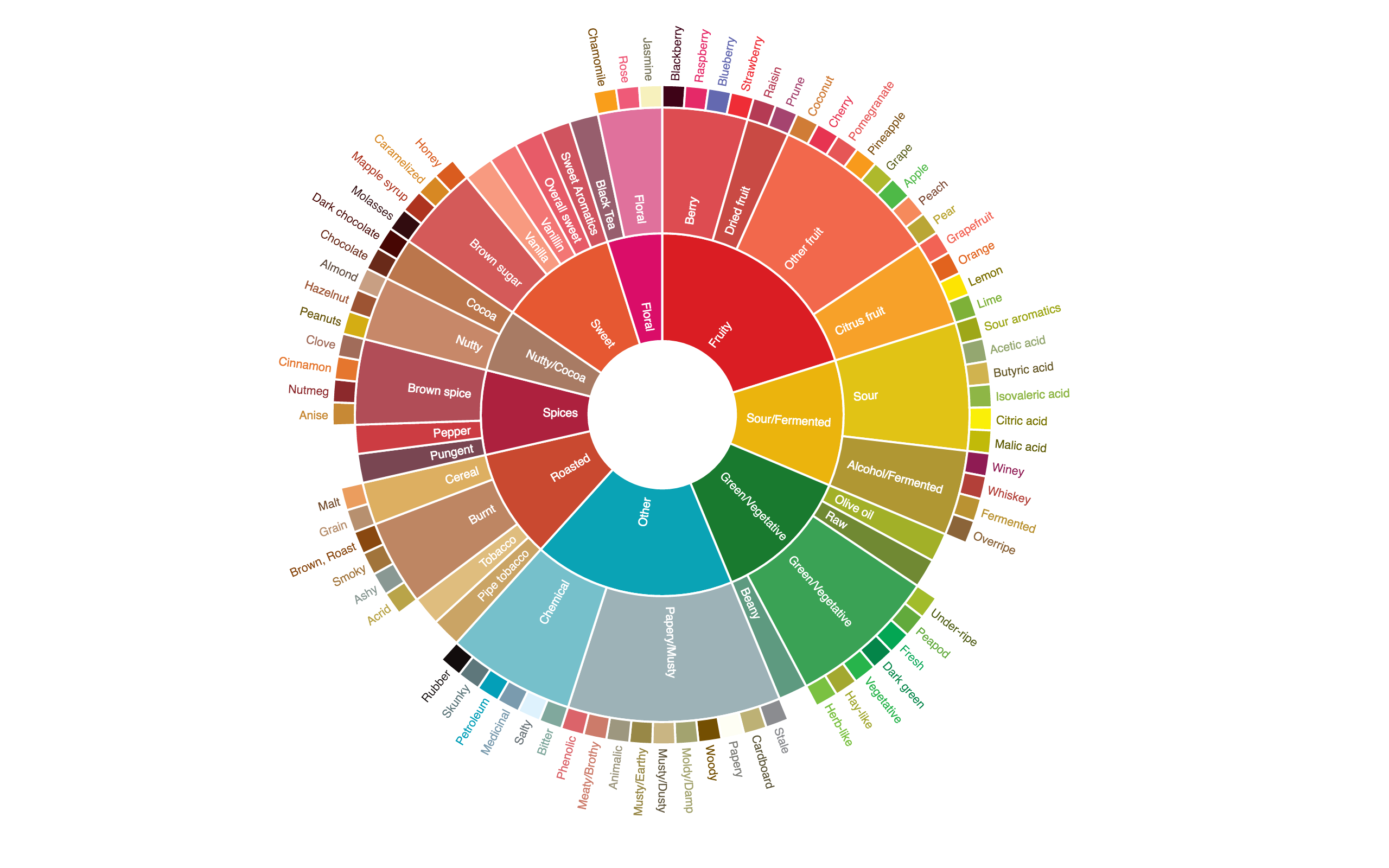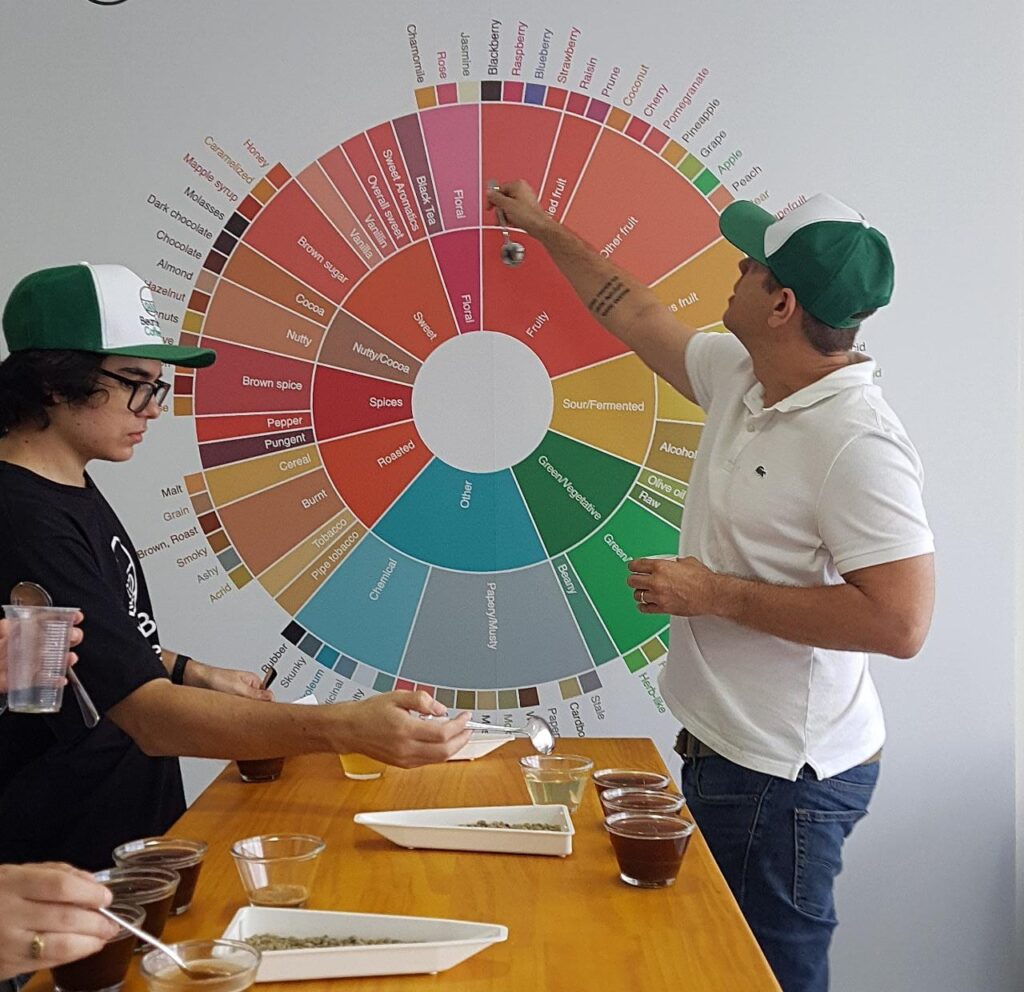Have you ever looked at the tasting notes for a coffee and wondered how on earth they come up with that stuff? Well, it’s not just pure imagination or even clever marketing.
Professional tasters use what’s known as a coffee flavor wheel to help identify the natural flavors in coffee. And with a bit of practice, you can too.
What Is The Coffee Flavor Wheel?
Since it was first published in 1995, the Specialty Coffee Association (SCA) Coffee Taster’s Flavor Wheel has been an invaluable tool for coffee professionals. The idea was to create a common vocabulary that tasters could use when cupping and was based on similar wheels for wine and beer.
But the Coffee Taster’s Flavor Wheel not just for experts. Getting familiar with the flavors in coffee can help you buy better coffee beans, and most importantly, discover what kinds of coffee you like to drink.
Using The Coffee Taster’s Flavor Wheel
Don’t be overwhelmed by all of the colors and labels on a flavor wheel. You’re not expected to know them all. There is a process to using the Coffee Taster’s Flavor Wheel.
Some parts of the chart will be closer to aromas, others to tastes, but most are a mixture of both.
It’s important first of all to understand what is meant by “flavor”. It combines aroma (sensed by the nose) and taste (sensed by the mouth), making up a multisensory experience.

1. Start In The Middle
Here you’ll find broadly grouped flavors. You might not be able to describe what you taste yet, but you should be able to determine whether it’s fruity, earthy, or nutty, for example. There’s also a category for “other,” which includes some of the more unpleasant tastes that come with defects in coffee beans.
2. Work Outwards
As you work outwards from the flavor wheel, you see that the flavors on each ring become more specific. Again, you might not be able to identify exactly what you taste, but it comes down to comparison. Take a sip of your coffee and evaluate the choices. If you taste the fruit, is it more like berries or more like citrus?
You can also choose to stop at any level. Describing something simply as nutty is still a helpful label to have. As you get more experienced, you’ll be able to get more specific with your tasting notes.
3. Take In The Details
There’s a reason that the flavor wheel looks the way it does, and it’s not just about aesthetics. First is the colors. Our sense of taste and smell is strongly connected to what we see, so grouping by color can help us to link the flavor to where it belongs on the flavor wheel (1).
You’ll also notice that adjacent cells on the chart are separated by a small gap, a large gap, or no gap at all. This is a visual indicator of how close these tastes are.
4. Learn The Lingo
The Coffee Taster’s Flavor Wheel is great in theory, but how do you know if your idea of “hay-like” or “caramelized” is the same as someone else’s? The development of the flavor wheel was based on a set of real-life references, which has been compiled as the World Coffee Research (WCR) Sensory Lexicon (2). Here you’ll find a detailed description of each flavor, as well as how to replicate it. (For the record, “hay-like” is based on the aroma of McCormick’s parsley flakes).
FONT: https://www.homegrounds.co/coffee-flavor-wheel/



